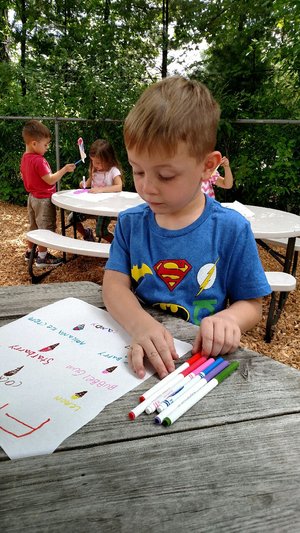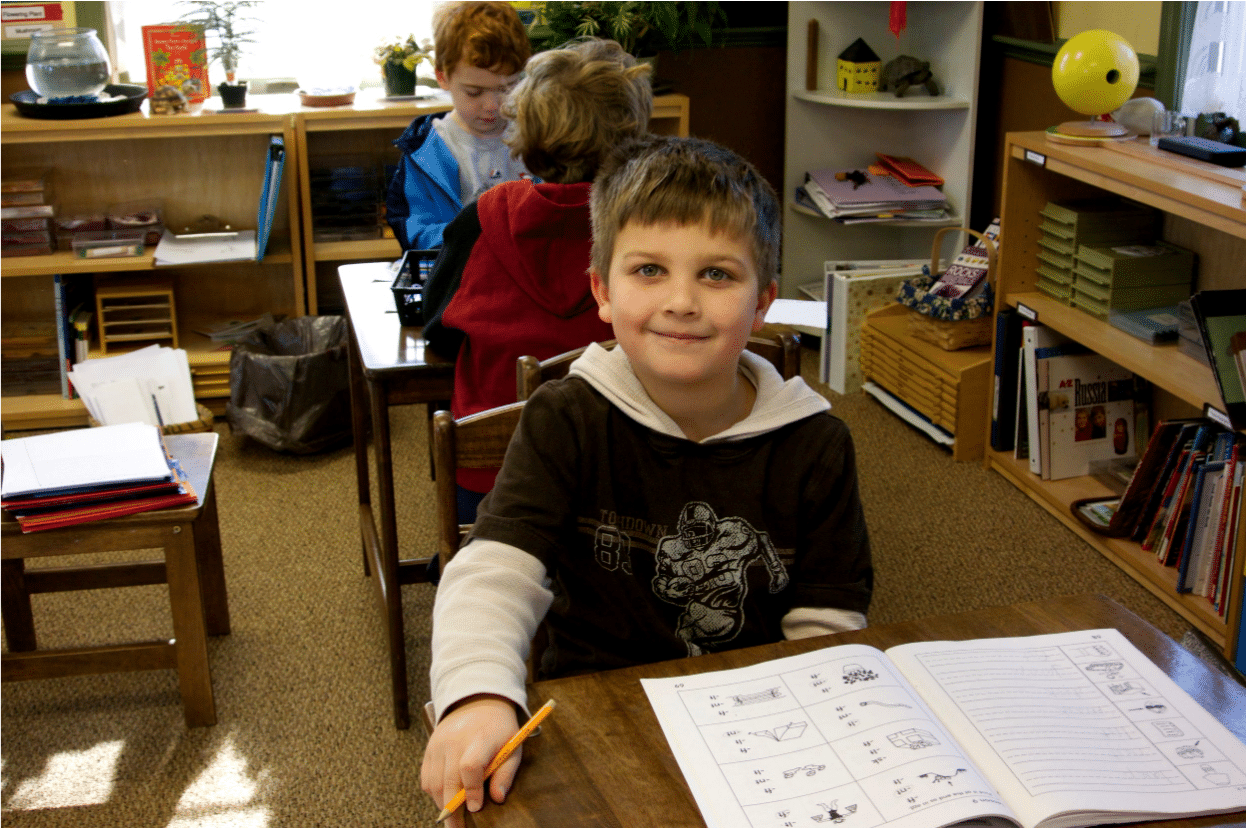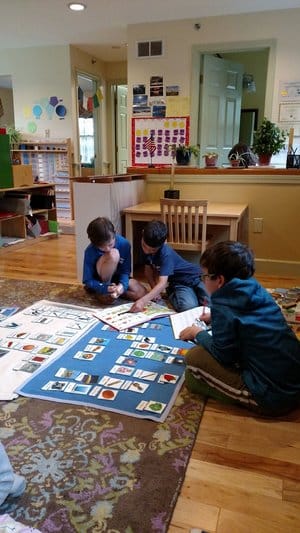Children's House
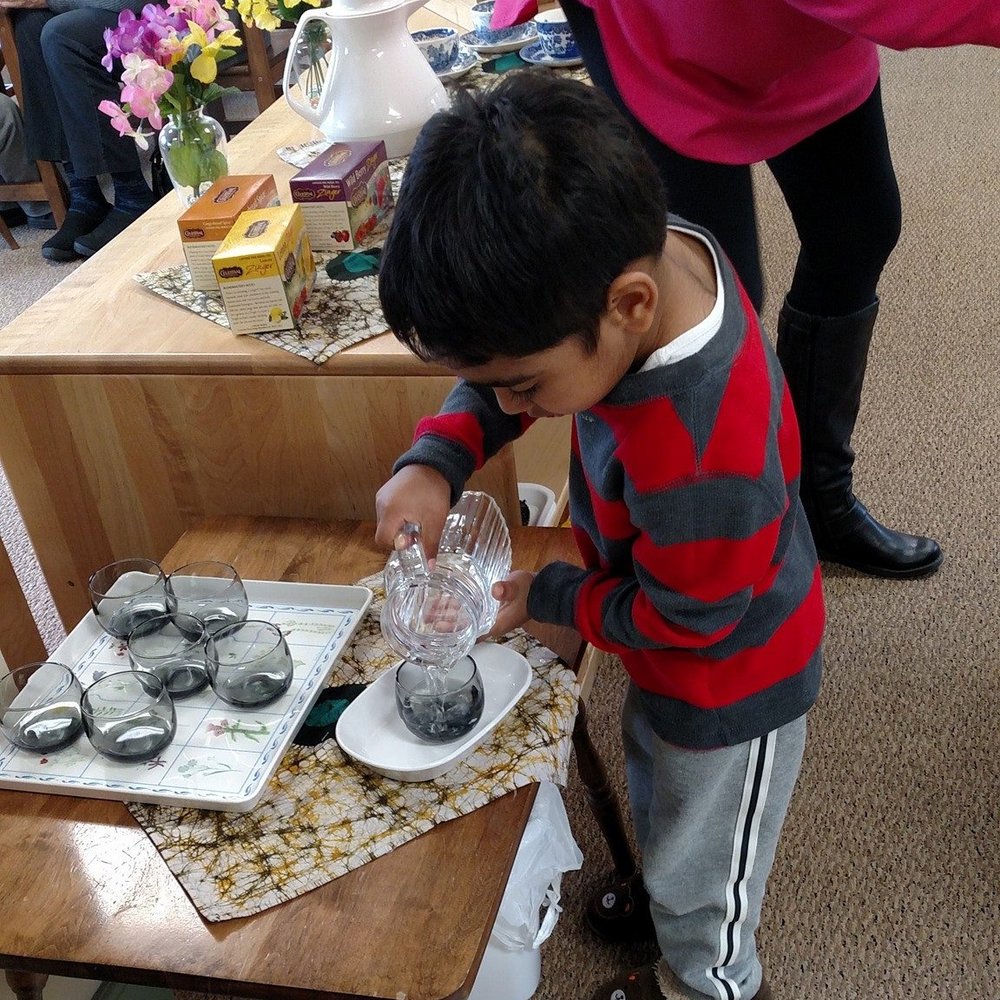
The Children’s House is our classroom for 3-6 year-olds (preschool to kindergarten). Dr. Maria Montessori called early childhood a “period of absorbancy”. The children are provided with a unique cycle of learning designed to take advantage of this sensitive period when information can be absorbed from a rich environment.
The materials in our classroom support the Montessori curriculum areas of practical life, sensorial, language and math. We also have geography and culture, music, science and art as regular features of the classroom. The Montessori classroom is grounded in a curriculum of peace. The environment, actions and interactions between members of the classroom community, and the atmosphere of the school speak to the child of the importance of living in peace and harmony with each other and nature.

Practical life offers the child simple and precise tasks that the child has already observed in the home. The purpose of these activities is to assist in inner construction of discipline, organization, independence, left to right correspondence, and concentration. Everyday tasks such as pouring, scooping, transferring, washing or polishing, to name a few, are designed to improve a child’s concentration, coordination and attention to detail. Some of the activities may also help fine motor coordination. The Practical Life materials are arranged in an ordered sequence. Care of the self, plants, and animals are also included. Lessons in grace and courtesy top off the impressive list of accomplishments in the Practical Life, or Everyday Living area.
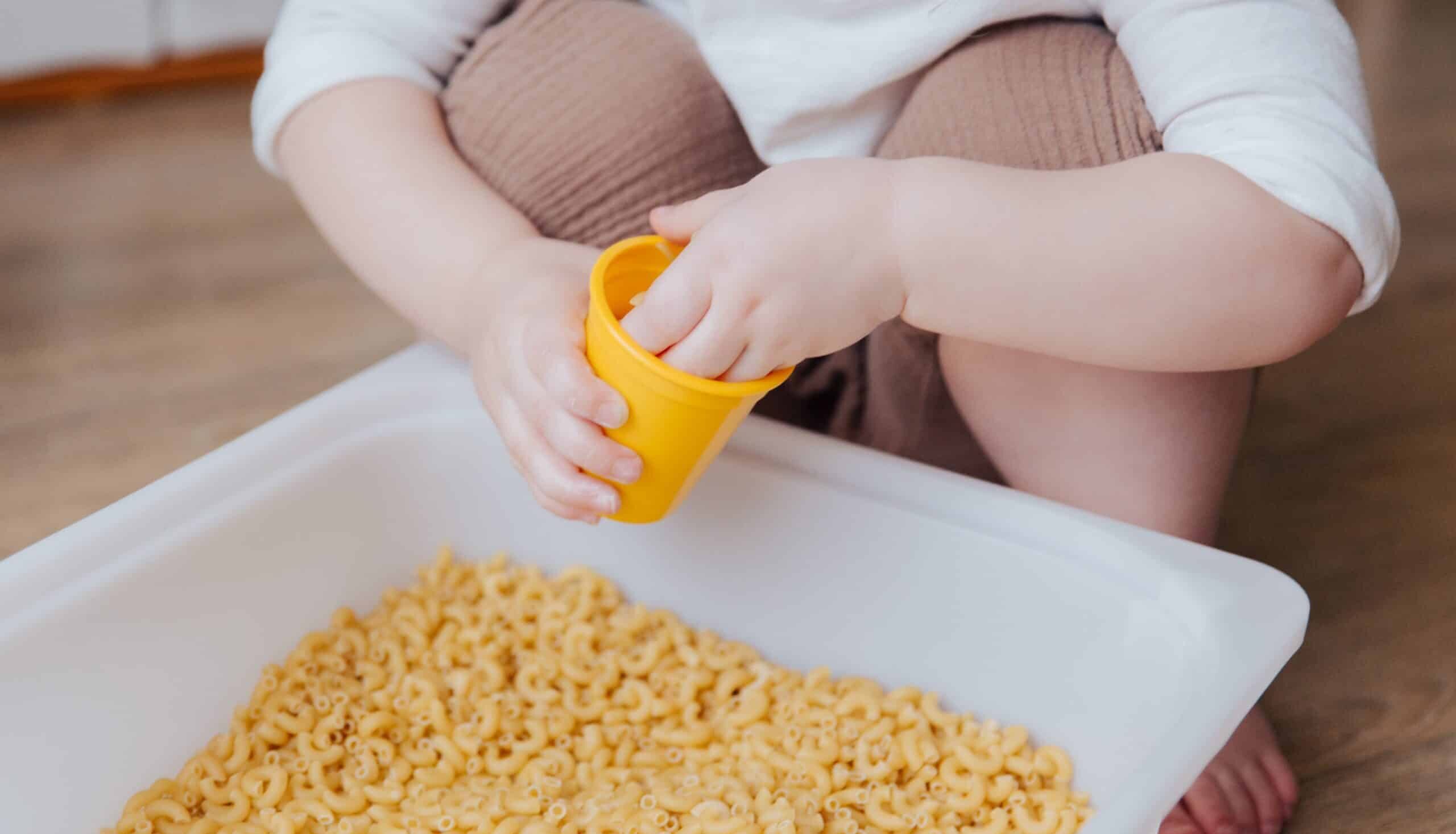
The purposes of the Sensorial Materials are to assist the child in descrimination abilities. The roots of math and science abide here. Organization, classification, comparison, and contrasts are all here with specific and isolating materials for the sensory impressions of color, size, texture, smells, sounds, shapes, weight, and form, to name a few. Again, the materials invite the child to explore and discover what they have already been exposed to in their environment and perhaps, see it in a new way, with new vocabulary and experience.

Through manipulation of concrete materials, children will gain a strong understanding of our number system. First we present numerical quantity, then numeration, and finally association of quantity and symbol. Many specific exercises assist the children in the move toward abstraction but not without first experiencing it in the concrete. Dr. Montessori demonstrated that if children have access to mathematical equipment in their early years, they can easily and joyfully assimilate many facts and skills of arithmetic.
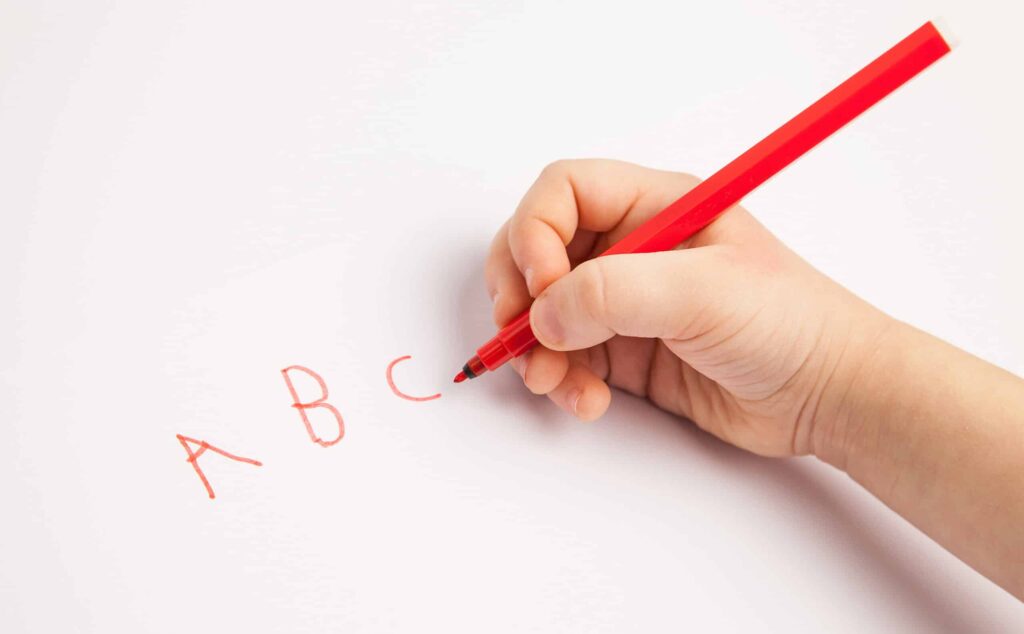
Writing may precede reading in a Montessori classroom. The young child develops a lightness of touch as well as learns associated sound/symbol relationships of our language with the sandpaper letters. Metal insets for shape tracing give the child plenty of pencil and paper experience without the necessary stress of producing the written word. Pin punch work as well as map tracing give the child’s hand quite a workout. The moveable alphabet becomes an invaluable tool once the child can master even a handful of sounds to build 3-letter phonetic words as a bridge to beginning reading.

Our environment is impressively enhanced by the study of the universe, our world, and our place in the world. The many people, places, animals, and climates of the world are studied through maps, globes, flags, languages and habits. Children learn about many different culture lifestyles, traditions, foods, and celebrations. The seeds of tolerance and acceptance are sown here.

The wonders of the natural world are explored in science. The story begins with the difference between Living/Non-living and extends to Plants/Animals, Vertebrates/Invertebrates and finally culminates with the five classes of Vertebrates, Fish, Amphibians, Reptiles, Birds, and Mammals. Included in the studies are observations, experiments, and care and appreciation of the world we share with other forms of life.

Art and music are daily on-going choices and events in the classroom, with an easel being ever-present available for expressions and singing at circle time a daily event. Rest assured art choices are available in the classroom on a daily basis. It’s reported without fail every year when the children begin singing school songs in the home. We find it especially endearing to hear them sing as they work!

